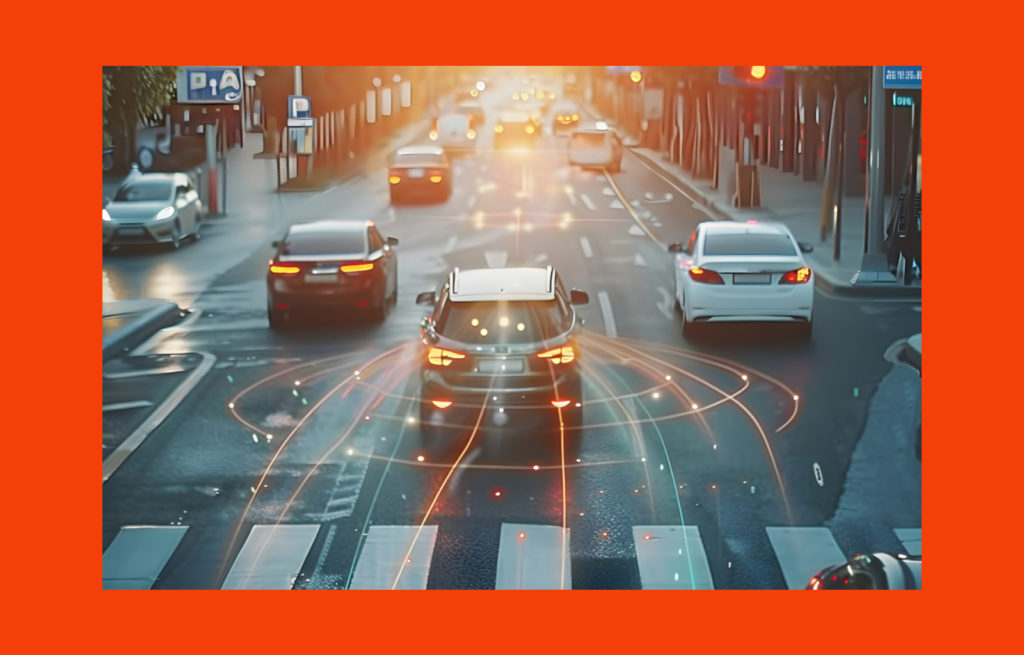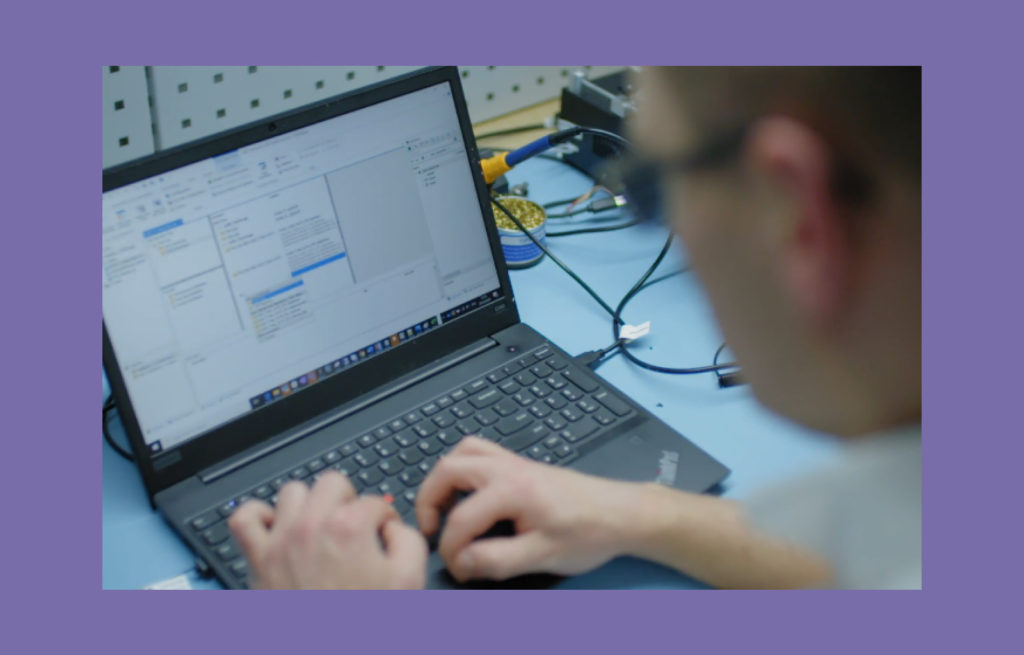How has the pandemic influenced the automotive sector?
The automotive sector is one of the areas that has been impacted quite heavily by the Covid-19 pandemic. Companies have been putting multiple projects on hold and investing in new technologies instead. This will give them an advantage over their competitors and generate extra revenue in a shorter amount of time.
Will the current situation influence the automotive sector in the long term, and what will it look like after the pandemic is over? Today, we’re discussing these topics with the Spyrosoft experts.
The pandemic gave rise to new trends in the automotive sector

Pawel Grygirl: The pandemic had a tremendous effect on the development of patient monitoring tools that could be transferrable to the automotive sector, at least potentially. One can imagine medical tools for measuring the temperature and monitoring the overall state of the driver and the passengers that could be installed in cars and in public transport. There’s also a huge demand for introducing shuttle vehicles that could be used for transporting severely ill people to and from hospitals. These could operate without being overseen by medical staff, especially if the vehicles were equipped with patient monitoring solutions. This way, they could be supported by an ambulance crew when/if necessary.
One can also imagine delivering medication and food to people in quarantine, using electric vehicles with no emissions. It could be in progress 24/7, without any humans involved.
This pandemic has unveiled a few more areas where autonomous driving could be introduced and where a change in our thinking about mobility, in general, could be beneficial. Companies are unlikely to start spending tens of millions of dollars to get these solutions faster, but the current situation is proof that it’s worth developing them.
Before the pandemic, there were talks of how quickly the car rental sector is growing, but it has been hit very hard. If you can avoid it, you don’t drive, you don’t rent a car, and you don’t travel at all. Currently, the emphasis has been put on developing solutions for logistics, goods transport and delivery. This was evident in the demand for hiring new delivery staff because companies couldn’t handle the number of orders from online sales. If this area could be supported with autonomous vehicles, they would be able to manage any type of surge.
There also has been a decrease in private car sales. On one hand, it’s directly related to the pandemic; on the other – to the economic crisis that the pandemic has triggered and the fact that if you can avoid taking a loan or buying a car with cash, then you do.
The current situation has also influenced manufacturers and their factories. It’s worth mentioning that while the production of mechanical gear has soared, producers are still getting involved in software projects. Their Research&Development (R&D) departments are still hard at work. The companies are still pursuing R&D projects banking on the crisis passing, and it’s essential to be ready when it happens.
What about the further development of autonomous cars, carsharing solutions or head-up displays?

Lukas Zelek: As the autonomous driving sector matures, we can see that it’s an evolution and not a revolution. Depending on the producer, we’re currently at the autonomy level 2 – 3 where, in certain conditions, a car can drive on its own only in steady traffic. The development of autonomous driving will still be carried out iteratively; new functionalities will be added, allowing for driving in new and more advanced conditions. We need at least a few more years to achieve full autonomy where there’s no need for a human driver, and the vehicle is able to take us anywhere regardless of the conditions on the road. Until then, we’ll start seeing autonomous driving solutions being employed in areas where limiting or predicting external conditions is possible, i.e. driving on motorways.
When it comes to carsharing, change is more generational. The current generation, which constitutes a significant portion of the market right now, sticks to traditional car usage, where the driver decides how and where to go. There’s also a digital generation that’s increasingly more visible in the market. They want to be online at all times, having constant access to the internet. This group of people will not see a car as we see it now. They will see it as another place where they can meet with others and communicate.
The popularity of car-sharing solutions will also be influenced by cost. The cost calculation will be the long-term deciding factor: having your own car or sharing it with others. One can assume that anyone who will be travelling regularly, would prefer to have a car of their own, and those who are travelling irregularly will be more likely to carshare. There will always be those who prefer privacy and those who simply enjoy driving. These people will favour having their own vehicle, preferably from the premium sector.
When discussing the automotive sector, we must remember the current economic climate. Even before the pandemic, the whole sector was experiencing a crisis. People started buying fewer cars in the wake of the new technology. The pandemic has only highlighted this stagnation.
When talking about something new, I mean vehicles that are powered by alternative sources such as electric, hydrogen-fuelled or hybrid cars. This stagnation has also been influenced by the discussion around whether to allow cars with combustion engines into city centres and the regulations that have followed this discussion. In Germany, there are certain areas where cars that can’t meet the emissions criteria will not be allowed into the city. Some cities have also increased these restrictions during the pandemic. In such cases, the only response is to use an electric car. All of these changes have had a significant influence on the sales of new cars.
One also needs to remember about the effect that new players in the automotive sector, such as Tesla, have on the market. They have clearly shown that electric cars can be a viable alternative to combustion cars. Long-established car manufacturers have got the message, and now they’re trying to catch up with industry newbies.
What influence has it had on the development of new technologies and components in the automotive sector? On one hand, R&D and the development of new tech must continue – if large producers are not the first ones to introduce certain solutions onto the market, they’re likely to lag behind.
On the other hand, some of the less crucial and less innovative projects have been put on hold, and the production cycles of certain components are getting longer. It all depends on the type of R&D projects we’re faced with. Projects such as ADAS that make a huge difference to the market and create additional value for an end-user will still be developed.
Also, innovative features, such as head-up displays and hybrid engines, are the type of projects that will be continued, while others may simply be cancelled by the manufacturers. One of the examples of such a project is the whole Diesel engine sector which has been the focus of many European producers for years. Now, it’s been replaced by the development of alternative sources of engine power. This will create financial cuts and mass dismissals in the Diesel engine industry. Anyone who has been involved in R&D projects in this technical domain will experience these.
The pandemic turned risks into new opportunities for the automotive sector
Pawel Grygirl: From the perspective of a customer that we’re currently working with, the automotive sector is in transition right now. The traditional – combustion, manual and automatic – engines are being replaced with electrical ones. Rising environmental consciousness means that manufacturing traditional components that have been associated with car engines from the beginning, will no longer be profitable. At the same time, the market is increasingly open to the aspects associated with level 4 (SAE 4) autonomous driving.
Our client has already shifted their strategy to focus on autonomous driving, but the current situation related to the Covid-19 pandemic has caused these efforts to be far more intense. All these solutions are meant to be used in the logistics sector, including the mass transportation of goods and the delivery of individual packages to the end customer.
The pandemic has highlighted the risks associated with this automotive industry, especially the food supply chains that are, in their entirety, based on the work of truck drivers. We couldn’t keep these chains uninterrupted once the pandemic struck. We had to quickly work out a compromise between the free flow of drivers between European countries and the safety measures introduced by each of these states. We now know that these transports, especially the food ones, had to undergo different and more effective safety checks than an individual crossing a border.
This highlights one of the niches that could be tackled with autonomous vehicles. A fleet of slower, but automatically managed trucks could keep the supply chains intact, especially the critical ones moving food, water, fuel and other staples.
Going back to our client. Their experience of how the automotive sector reacted to the 2008 financial crisis has been essential for establishing their new strategy. In 2008, most of the companies stopped any activity related to new technologies with long-term returns on investment.
It severely impacted the introduction of multiple innovative products and solutions. Currently, the automotive sector, including our customers, tries to see the crisis through a strategic lens with a longer perspective. Instead of halting all R&D projects, they speed up the critical ones by increasing their funding, so they can start bringing in extra revenue in 1 – 3 years.
This situation is similar to what we are currently experiencing with the change in thinking about mobility in general. The pandemic will not stop this trend – if anything – it will intensify it.
When we look at cars that are stuck in traffic nowadays, most of them are used in a less than optimal way, with one person in each vehicle. Imagine that instead of these cars, we could have a fleet of vehicles that would move around the city in a similar way to buses and trams, but with more flexibility. Firstly, we would be able to manage how many cars are in a certain area to optimise the traffic during rush hours by the mechanical usage of the roads. Secondly, we would also be responding dynamically to any interruptions to the traffic.
We already know how it works from Google Maps and Here, with these applications displaying overcrowded arterial roads and suggesting how to avoid these. We could even go one step further. With autonomous vehicles moving to their destinations, we could set up a central system that would process information from all of these fleet vehicles, identifying any interruptions and accidents and transferring these details to all cars so they could take optimal routes.
This way, both a passenger and a delivered package could get to where they needed to be safely and on time. Now, let’s include autonomous ambulances and other vehicles of this sort in this picture.
It all sounds very far off, but is it really?
Pawel Grygirl: The company that releases fully autonomous cars managed by this integrated central system, onto the market first, will be an industry leader, and this vehicle will be a much-requested means of transport in many places in the world, especially those with heavy traffic.
From my perspective, fleets controlled by different delivery firms will be an everyday element of our lives. Privately owned cars will be a luxury. The single cost of introducing individually owned autonomous vehicles is simply too high. We will move in the direction of car-as-a-service and using more environmentally friendly and effective ways of moving around.
About the author




